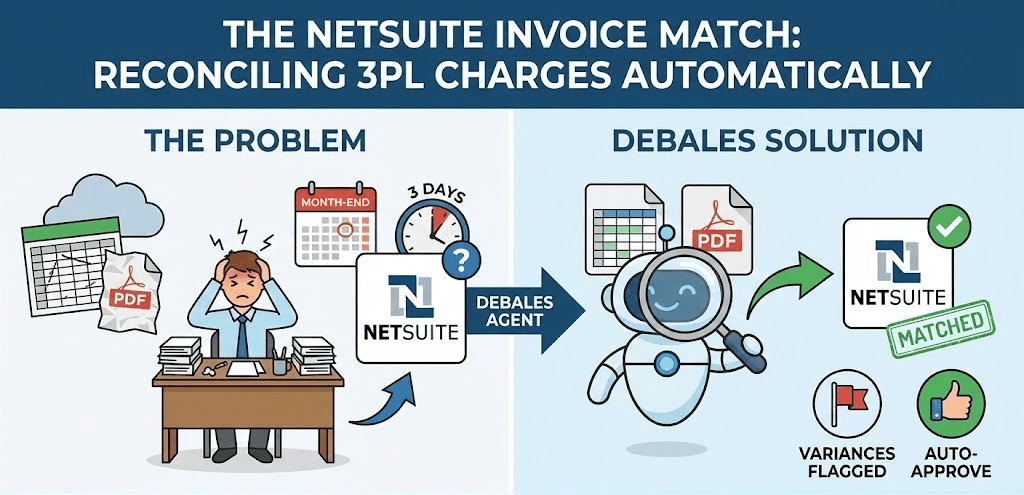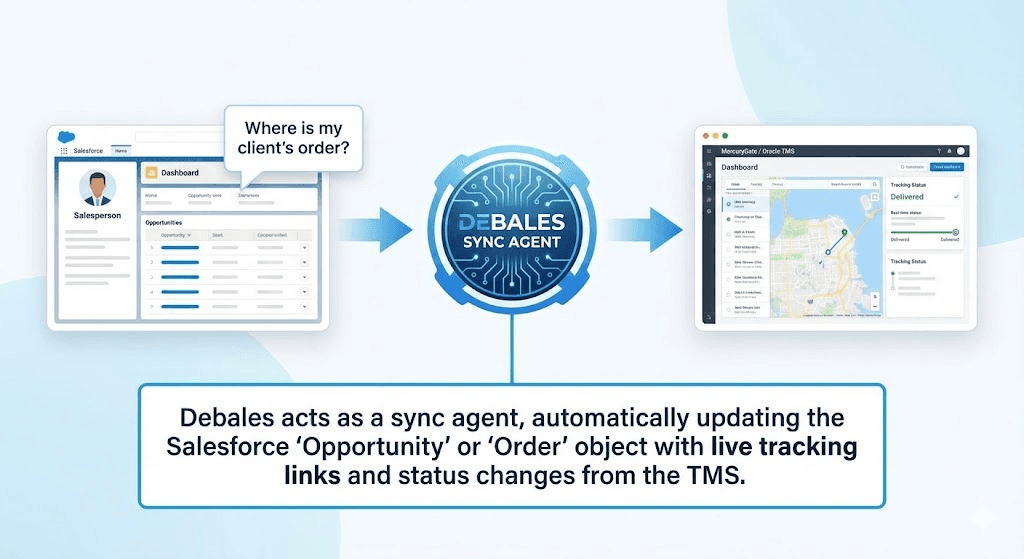Predictive AI Agents: Anticipatory Logistics Systems for Future
Saturday, 18 Oct 2025
|
From Reactive to Anticipatory: Building Logistics Systems That Predict and Prevent Problems
Introduction: The Shift from Reaction to Prediction in Logistics
The logistics sector is undergoing a paradigm shift. Traditionally, supply chains have been largely reactive, managing disruptions only after they occur—often wrestling with delays, cost overruns, and reputational damage. But in today’s fast-evolving and complex global ecosystem, this method is no longer viable.
The future belongs to anticipatory logistics systems—powered by advanced Artificial Intelligence (AI) predictive agents that forecast potential disruptions 7 to 14 days in advance and proactively initiate mitigation actions automatically. This shift from reactive to anticipatory operations not only enhances supply chain resilience but also unlocks new efficiencies, cost savings, and superior customer experiences.
For logistics CEOs, CXOs, and COOs, mastering anticipatory logistics is imperative. This post explores how predictive AI agents make this transition possible, the underlying technologies, real-world business impacts, and strategic imperatives for successful adoption.
What Are Predictive AI Agents in Logistics?
At the heart of anticipatory logistics are predictive AI agents—autonomous software entities designed to analyze vast amounts of real-time and historical data, identify patterns that signal impending disruptions, and proactively orchestrate responses.
These agents continuously ingest data from diverse sources such as:
- Shipment tracking systems providing location and status updates.
- Weather forecast feeds highlighting impending adverse conditions.
- Port operation and congestion reports.
- Inventory and warehouse sensor data.
- Supplier lead times and compliance reports.
- Geopolitical news and customs alerts.
- Customer order patterns and market demand signals.
By synthesizing this complex, multi-dimensional data, predictive AI agents generate forecasts on issues such as late deliveries, inventory shortages, capacity constraints, or regulatory delays 7-14 days ahead. Unlike traditional alert systems which notify after anomalies, predictive agents forecast the future of disruptions with confidence scores and quantifiable business impact metrics.
The Core Technologies Behind Predictive Agents
Building anticipatory logistics systems involves a fusion of advanced AI techniques and systems integration:
1. Machine Learning Forecasting Models
Supervised and unsupervised machine learning algorithms analyze historical event sequences and causal correlations to build predictive models. Models continuously retrain on fresh data, improving accuracy and adjusting to evolving supply chain dynamics. Techniques like time series forecasting, regression analysis, and ensemble learning are common.
2. Anomaly Detection and Early Warning Systems
Statistical anomaly detection algorithms identify deviations from expected patterns in shipment progress, inventory levels, or supplier behaviors. Early anomalies trigger deeper model scans to assess the potential impact, filtering false alarms from meaningful risks.
3. Scenario Simulation and What-If Analysis
Simulation engines enable agents to generate multiple potential future scenarios, testing what-if questions such as “What if port congestion worsens?” or “How would a supplier delay ripple through assembly lines?” These simulations feed into risk assessment and mitigation prioritization.
4. Autonomous Decision-Making Frameworks
Once risks are quantified, autonomous decision-making algorithms select optimal mitigation strategies according to business rules, service-level agreements (SLAs), costs, and priorities. Reinforcement learning can help agents continuously improve decision quality.
5. Integration and Workflow Orchestration
These AI agents are embedded within enterprise systems such as Transportation Management Systems (TMS), Warehouse Management Systems (WMS), Enterprise Resource Planning (ERP), and customer engagement platforms, enabling seamless intervention and execution of mitigation tasks.
How Predictive Agents Forecast Disruptions 7-14 Days Ahead
Predictive agents forecast disruptions using a combination of:
- Event Correlation Across Data Streams: Linking seemingly disparate events such as upstream supplier delays, port congestion reports, and weather alerts.
- Trend Identification: Analyzing evolving operational trends over recent weeks compared to historical seasonal baselines.
- Dynamic Risk Scoring: Producing ongoing scores quantifying the likelihood and severity of each potential disruption.
- Lead Time Buffering: Factoring in average supply chain lead times to calculate how upstream issues might materialize later.
For example, if an AI agent detects a rising trend of vessel delays at a critical port combined with an impending tropical storm in the region, it anticipates shipment delays and flags risk 12 days ahead—enabling graceful alternatives rather than last-minute chaos.
Automated Mitigation Strategies: From Prediction to Prevention
Forecasting risks is only half the equation. The major value lies in automatic mitigation—AI agents executing predefined or optimized strategies to neutralize or minimize disruption impacts swiftly and efficiently.
Examples of mitigation actions include:
- Re-routing Shipments: Automatically assigning alternate carriers or modes of transport to avoid affected nodes.
- Adjusting Inventory Positions: Sending additional inventory to warehouses ahead of forecasted demand surges or delays.
- Rescheduling Deliveries: Modifying delivery windows to accommodate potential constraints, with real-time customer updates.
- Engaging Alternate Suppliers: Activating backup suppliers or expediting purchase orders preemptively.
- Dynamic Pricing Adjustments: Modifying freight quotes in response to shifting capacity or urgency.
The key is closing the loop—AI agents initiate and track these interventions autonomously, minimizing manual workflow interruptions and reducing response times from days to minutes.
Real-World Outcomes: How Leading Logistics Providers Benefit
Top logistics and 3PL firms adopting anticipatory AI systems report remarkable outcomes:
- 40% reduction in late deliveries and freight claims through early problem identification.
- 30% lower operational costs from reduced emergency freight and expedited handling.
- 25% improvement in customer satisfaction via proactive communication and transparency.
- Enhanced supply chain resilience able to withstand shocks from global disruptions like pandemics, strikes, or geopolitical events.
- Improved forecasting accuracy, enabling leaner inventory holdings with less risk of stockouts.
One global 3PL accelerated shipment rerouting decisions, reducing average disruption recovery time from 48 hours to under 6 hours, yielding millions in savings annually.
Challenges in Adopting Predictive AI Agents and How to Overcome Them
While the benefits are compelling, implementing predictive agents requires addressing:
- Data Quality and Integration: Reliable, timely data across heterogeneous sources is crucial. Investing in robust data integration and cleansing platforms is foundational.
- Change Management: Transitioning from reactive to anticipatory workflows demands trained personnel, clear accountability, and leadership buy-in.
- Scalability and Flexibility: Pilot small, prove value, and gradually expand AI agent scope. Flexibility is required to adapt rules and thresholds as business evolves.
- Transparency and Trust: Executives must understand how AI predictions are made and maintain confidence through explainable AI methods.
Partnering with proven AI vendors and leveraging domain expertise minimizes pitfalls and accelerates adoption.
Strategic Imperatives for Logistics Executives
To leverage anticipatory AI agents effectively, leaders should:
Develop a Clear AI Roadmap: Define business goals, disruption scenarios to prioritize, and integration plans.
Invest in Data Foundations: Modernize data infrastructure and ensure interoperability across TMS, WMS, ERP, and external sources.
Pilot with High-Impact Use Cases: Start with forecasting critical shipment delays or stockouts to demonstrate measurable ROI quickly.
Prioritize Cross-Functional Collaboration: Align operations, IT, procurement, and customer experience teams around AI adoption goals.
Foster a Culture of Proactivity: Train teams to trust AI insights and collaborate with agents on prevention rather than firefighting.
Internal Links for Further Insight
Deepen your understanding with related Debales.ai insights:
- AI-Powered Tracking: The Future of Delivery Transparency in Logistics
- How AI Manages Risk and Disruptions in Supply Chains
- From Cost-to-Serve to Profit-to-Serve: AI-Powered Pricing for Logistics
Take Control with Predictive AI Agents
Shift your logistics operation from reactive chaos to confident anticipation. Discover how debales.ai’s predictive AI agents help forecast and prevent problems weeks in advance, automating mitigation and unlocking efficiency.
Book a personalized demo today
Conclusion: The Anticipatory Future Is Here
Predictive AI agents represent a quantum leap in how logistics systems manage risk and complexity. Moving beyond reaction to anticipation and prevention not only preserves margins and service levels but also builds resilient, agile supply chains ready for disruption.
Executives who embrace anticipatory logistics today will reap durable competitive advantage in tomorrow’s rapidly evolving market landscape.
All blog posts
View All →
Monday, 1 Dec 2025
NetSuite 3PL Billing Automation: Catch Pricing Errors Instantly
3PL sends messy spreadsheets/PDF invoices monthly. Accounting wastes 3 days matching against NetSuite. Debales agent auto-reconciles line-by-line, flags pricing errors, and approves matches instantly.

Sunday, 30 Nov 2025
Live Shipment Status in Salesforce: MercuryGate/Oracle TMS Sync
Sales reps ping ops via Slack for shipment status because Salesforce lacks live TMS data from MercuryGate/Oracle. Debales syncs tracking links and status directly to Opportunity/Order objects automatically.

Saturday, 29 Nov 2025
Fixing Inventory Sync Lag Between Shopify and Legacy WMS
Oversold inventory from Shopify and legacy WMS sync lag costs sales and customers. Learn how Debales AI bridges these with real-time order-driven inventory reservation to prevent stockouts.